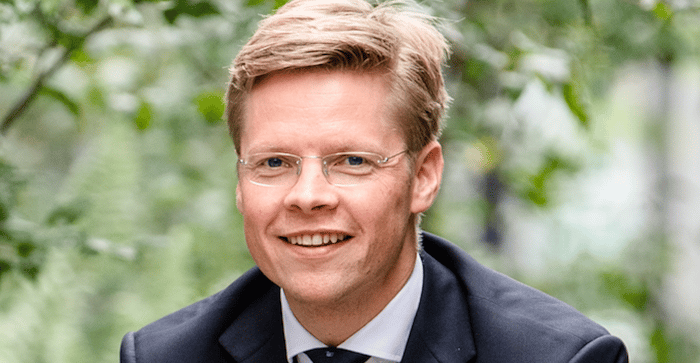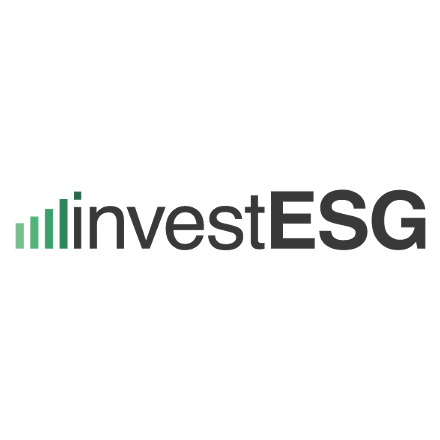The renewable energy sector remains a key factor in the global energy transition, and both Ørsted and Enel play central roles in this.


Photo credit: DNB Asset Management
Christian Rom, Portfolio Manager at DNB Asset Management
In the renewable energy sector, Ørsted and Enel are two of the most prominent names. Both companies face challenges and opportunities, but their recent developments could hardly be more different. While Ørsted is struggling with significant problems in its US offshore wind portfolio, Enel is benefiting from the stabilization of the European energy markets. A closer look at the facts and figures shows how differently these two companies are developing in the current market environment.
Ørsted has experienced an unprecedented series of challenges in recent years, particularly in the US market. The company recently had to announce further write-downs of 12.1 billion Danish kroner (DKK). This is made up of DKK 4.3 billion caused by increased US long-term interest rates in the fourth quarter of 2024, DKK 5.5 billion reducing the value of US seabed properties to virtually zero, and a further DKK 4.3 billion resulting from increased investment costs in the Sunrise Wind project. The reasons for these problems are manifold, ranging from internal weaknesses in project management to external factors such as a more restrictive policy by the Trump administration.
The political uncertainties in the USA pose a particular risk. An executive order from the Trump administration recently excluded all areas on the outer continental shelf from new offshore wind leasing contracts. While this does not affect Ørsted's existing projects such as Revolution Wind (704 megawatts) and Sunrise Wind (924 megawatts), the development of new projects could be significantly hampered in the coming years. At the same time, Ørsted has recorded a total of DKK 45 billion in write-downs in its US business over the last three years. The company could have to increase this figure to as much as DKK 50 billion if additional tax relief is not granted. The total loss in market capitalization since the end of August 2023 is DKK 118 billion.
Despite these setbacks, Ørsted remains optimistic. For 2024, the company forecasts EBITDA of DKK 24.8 billion, which is in the middle of its original guidance of DKK 24 to 26 billion. With a planned earnings growth rate in the high single digits until 2030 and an expected return on capital employed (ROCE) of around 14 percent, the company continues to show itself as a market leader in a growing segment. In particular, the increasing global demand for offshore wind energy offers Ørsted opportunities to remain profitable in the long term.
Ørsted recently parted ways with its previous CEO Mads Nipper. His successor is the previous Deputy CEO and Chief Commercial Officer Rasmus Errboe. This change was not entirely surprising, as Errboe was already appointed to these positions in March 2024. Errboe brings more than a decade of experience at Ørsted and has held various key positions in the company. This indicates that he has a comprehensive understanding of the business. His main tasks will be to drive operational excellence and improved risk management to position the costly US market entry debacle as an isolated event . Once the company is stabilized, the focus will be on minimizing risks and achieving the 2030 targets.
With a view to expanding the Polish offshore market, the Polish energy supplier PGE and Ørsted have made the final investment decision for the construction of the Baltica 2 offshore wind farm. The Baltica 2 offshore wind farm in the Baltic Sea with a capacity of 1,500 MW is a joint project of PGE Polska Grupa Energetyczna and the Danish offshore world market leader Ørsted. The Polish government is driving forward the expansion of offshore wind energy and plans to install a total of 18,000 MW (18 GW) of wind power capacity in the Baltic Sea by 2040. Ørsted remains a key player in the industry due to its strong market position and expertise.
Strategic realignment at Enel
Enel, on the other hand, presents a completely different picture. The Italian company has benefited from stabilized electricity prices in Europe, which are now at a balanced level following the turbulence triggered by the Ukraine conflict. This development has significantly improved the company's balance sheet, in particular by reducing collateral requirements in the area of hedging. In addition, hydrological conditions in Europe have recovered significantly in 2023 and 2024 and are at historic highs, strengthening hydroelectric power generation. These positive developments have helped Enel to achieve stable earnings and a solid performance on the markets.
Enel's strategic realignment has also attracted attention. The company is increasingly focusing on investments in electricity grids, which was welcomed by many investors. However, the focus on the expansion of renewable energies has been reduced, which has provoked mixed reactions in the industry. Critics argue that Enel could miss out on market potential in the long term by reducing its involvement in renewable energies. Nevertheless, the company has achieved short-term stability through this realignment and remains a favorite of many investors.
The development of these two companies exemplifies the tensions and opportunities in the renewable energy sector. Ørsted is struggling with short-term challenges, but remains an important player due to its leading market share and strong position in the offshore wind segment. Enel, on the other hand, has achieved short-term stability but could benefit from a stronger focus on renewables in the long term. Investors are therefore faced with a strategic decision: To bet on the long-term opportunities of an ailing market leader like Ørsted or to favor the stability of an established utility like Enel.
The renewable energy sector remains a key factor in the global energy transition, and both Ørsted and Enel play central roles in this. Despite the challenges, the potential for growth and innovation in this sector remains unbroken.
Commentary by Christian Rom, Portfolio Manager at DNB Asset Management
Published by
 investESG
investESG
 investESG
investESG

